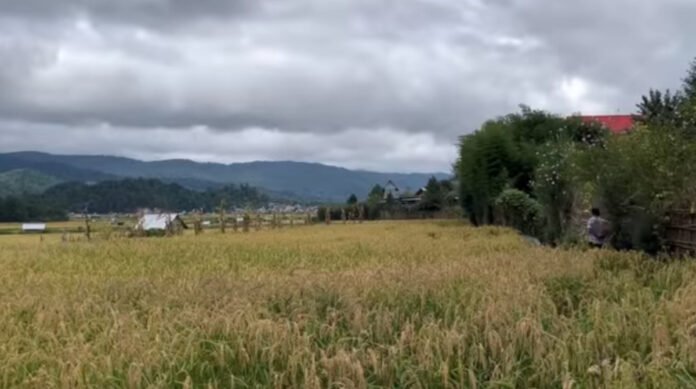In the fertile Apatani valley of Arunachal Pradesh lies a secret to sustainable agriculture, passed down through generations. While most of the world relies on chemical fertilizers and pesticides for high-yield farming, the Apatani tribe has perfected an ingenious system of wet rice cultivation that’s been sustaining their community for centuries without any external inputs. This traditional method is a testament to the fact that eco-friendly farming is not a modern concept but a practice deeply embedded in the cultural fabric of Northeast India.
The Wisdom of Water and Land
The Apatanis’ farming method is more than just growing rice; it’s an intricate ecological system. Their farms are a mix of rice paddies and fish ponds, creating a self-sustaining ecosystem. They build intricate networks of channels to divert water from streams and rivers, ensuring a steady supply for their terraced fields. The secret to their success lies in integrating agriculture with natural resources. The Apatanis cleverly use bamboo and other local materials to construct their fields, preventing soil erosion and making the most of the hilly terrain.
The most fascinating aspect of their method is the absence of chemical fertilizers. Instead, they rely on a technique called intercropping, where fish and rice are grown together. The fish manure naturally fertilizes the rice paddies, and in turn, the rice plants provide shade and protection for the fish. This symbiotic relationship not only eliminates the need for artificial fertilizers but also provides the community with a valuable source of protein.
Preserving Heirloom Varieties
While modern agriculture has focused on a few high-yielding rice varieties, the Apatanis have preserved a rich diversity of heirloom rice varieties, each with its own unique flavor and resilience. Varieties like Emon, known for its aroma, and Mipyin, a short-duration rice, are a part of their heritage. These traditional varieties are often more resistant to local pests and diseases, and their cultivation ensures a stable food source for the community.
The preservation of these varieties is crucial not just for food security but also for safeguarding the community’s cultural identity. Many of their festivals and rituals are centered around the planting and harvesting of these crops, making the continuation of this farming method a vital part of their existence.
The Apatani system is a powerful example of how ancient knowledge can provide sustainable solutions to modern problems. As the world seeks greener alternatives to food production, this tribe’s traditional farming methods offer a compelling blueprint for a future where agriculture coexists with nature. It’s a living heritage that proves sustainability is not a new invention but a time-honored tradition.

























